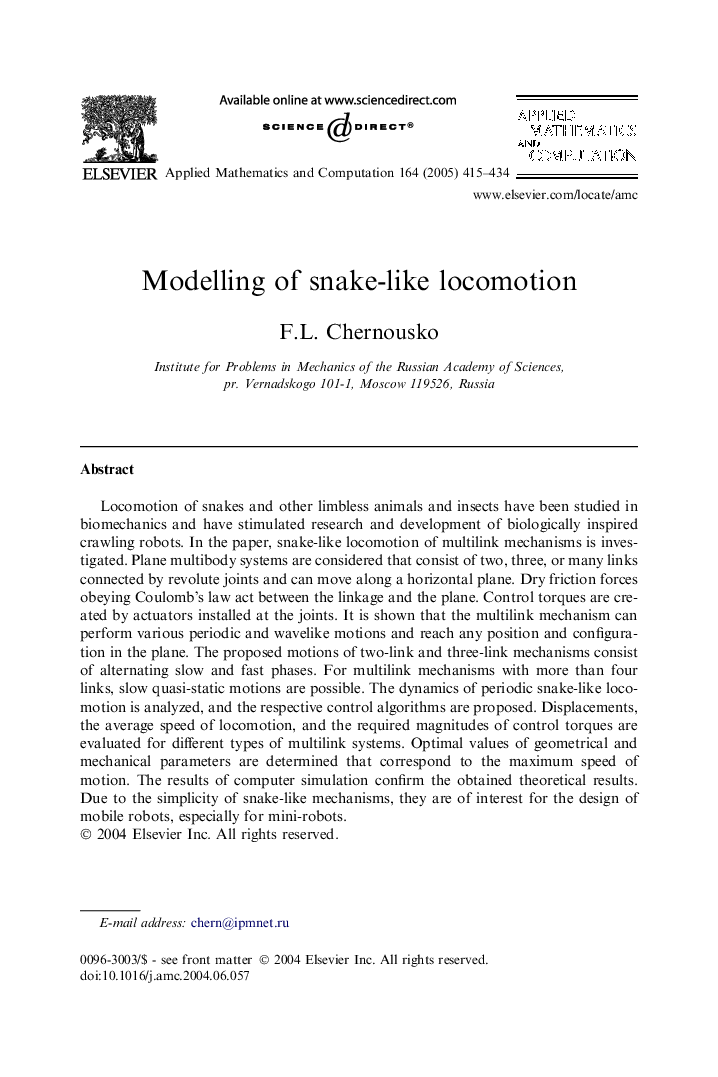| Article ID | Journal | Published Year | Pages | File Type |
|---|---|---|---|---|
| 9506743 | Applied Mathematics and Computation | 2005 | 20 Pages |
Abstract
Locomotion of snakes and other limbless animals and insects have been studied in biomechanics and have stimulated research and development of biologically inspired crawling robots. In the paper, snake-like locomotion of multilink mechanisms is investigated. Plane multibody systems are considered that consist of two, three, or many links connected by revolute joints and can move along a horizontal plane. Dry friction forces obeying Coulomb's law act between the linkage and the plane. Control torques are created by actuators installed at the joints. It is shown that the multilink mechanism can perform various periodic and wavelike motions and reach any position and configuration in the plane. The proposed motions of two-link and three-link mechanisms consist of alternating slow and fast phases. For multilink mechanisms with more than four links, slow quasi-static motions are possible. The dynamics of periodic snake-like locomotion is analyzed, and the respective control algorithms are proposed. Displacements, the average speed of locomotion, and the required magnitudes of control torques are evaluated for different types of multilink systems. Optimal values of geometrical and mechanical parameters are determined that correspond to the maximum speed of motion. The results of computer simulation confirm the obtained theoretical results. Due to the simplicity of snake-like mechanisms, they are of interest for the design of mobile robots, especially for mini-robots.
Related Topics
Physical Sciences and Engineering
Mathematics
Applied Mathematics
Authors
F.L. Chernousko,
